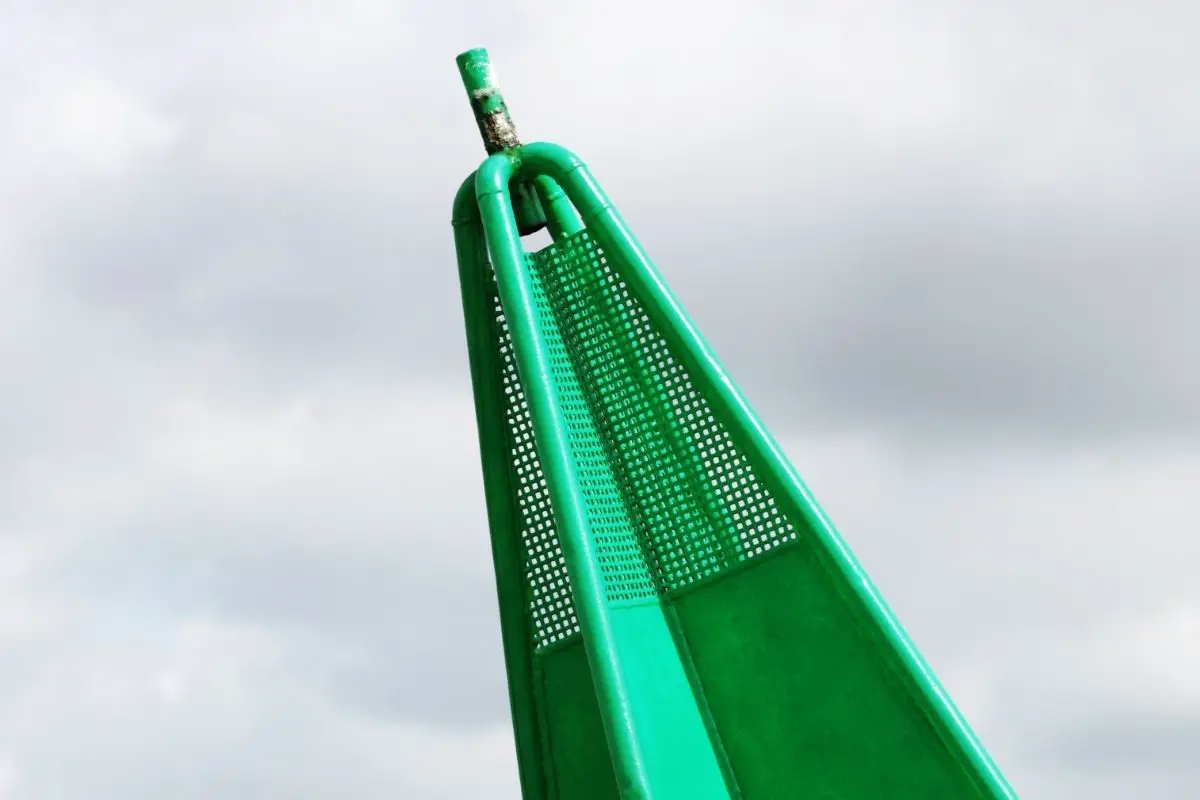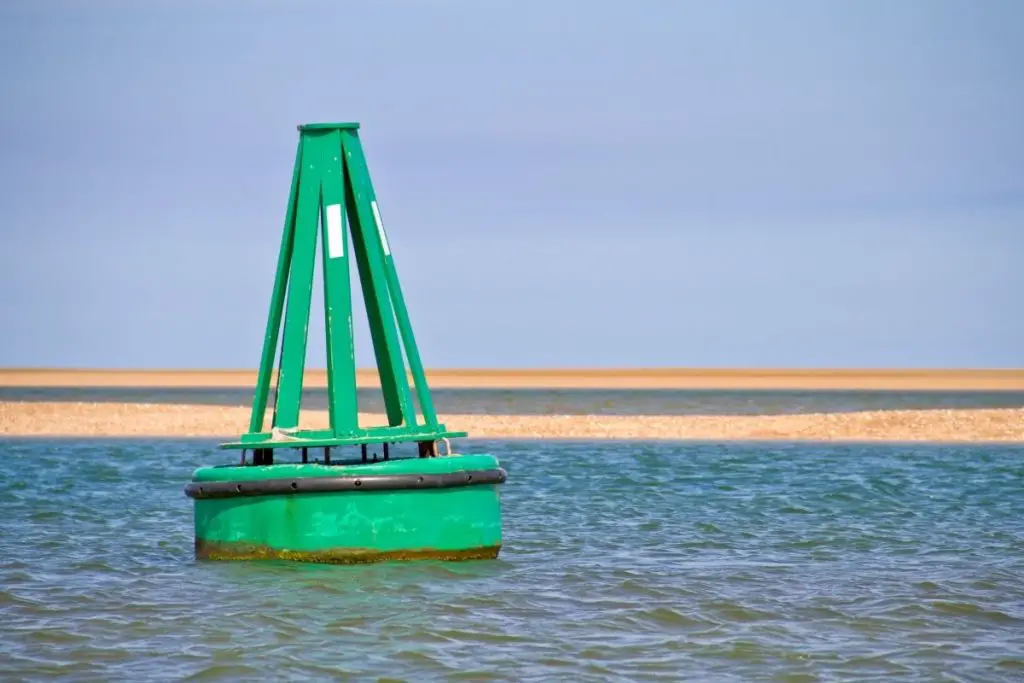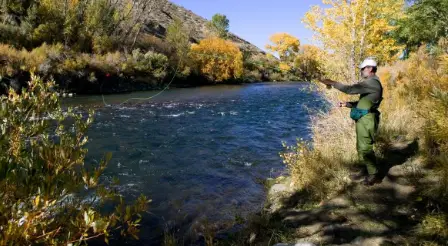Buoys are a navigational tool used by the coast guard. In this guide we cover green cone shaped buoy mark as well as what other buoys mean.
Since a child gazing out at the sea you have seen these, but have you ever known what they actually mean?
Or, maybe you are a nautical newbie trying to learn the ropes, and the buoy system in America is proving hard to get to grips with.
Luckily there are often fun rhymes that sailors created to learn them themselves.
Whether it is curiosity or just a simple explanation you need, in this guide we will cover the green con shaped buoy mark, as well as some other similar buoys, and discover what they mean, together! Ship ahoy!
What Are Buoys?
Put simply, a buoy is a flotation device that can act as markers for the seafarers of the world. A buoy is essentially the same as a road sign on a road.
Sometimes they tell you where to go, sometimes they tell you what’s ahead, sometimes they are warnings.
You are likely to spot a buoy system on a river, lake, intercoastal highway, and the open seas.
The sea without buoys is just a massive swimming pool with no directions. The buoys help the seafarers of the world anticipate what’s ahead and change their course to fit their purpose.
Unlike road directions, buoys do not use symbols or signs, they instead use a color system, and occasionally different shapes, to signal what’s ahead and which direction to follow.
Different countries will have different buoy systems and colors that mean different things, so sometimes you need to be aware what country uses what system in order to save face.
Why Are Some Buoys Shaped Differently?
As images or symbols aren’t used on buoys, the colors and shapes become more important for navigation.
In terms of form, some buoys may have lights on top, some may not, this doesn’t necessarily change what they mean, rather, it means you can see them at night.
A buoy with a cone on the top is called a ‘nun’, while a buoy with a flat top is called a ‘cone’.
It’s worth mentioning that there is another navigational device you may see known as a beacon.
Beacons are often larger than buoys and are usually permanently fixed to the floor of the body of water.
Beacons usually have lights on top, when they do not have lights on top they are known as day beacons.
Different Ways Buoys Are Used

Tyger Leader is reader-supported and may earn a commission when you book or purchase using our links. Learn more about our affiliate disclaimer here.
One thing a buoy may signal is that there is potentially dangerous debris within the area of that buoy.
Perhaps signaling man-made dangers, natural dangers, rocks, shallow waters or a designated channel.
Most waterways will usually have a preferred channel as well as a secondary channel in order to filter different boaters into different lanes for different uses.
Usually one channel is deeper than the other making space for larger boats etc.
If the buoy has numbers they will often decrease while you are heading downstream and increase when you head upstream, helping you navigate the waters.
A red nun buoy will always have even numbers that decrease the closer to port you are.
An anchorage buoy can also signal where a boat is safe or designated to anchor their ship. A mooring buoy serves a similar purpose.
A diamond formation of buoys with a T or X in the middle indicates that area is prohibited for most boats.
What Does The Green Cone Shaped Buoy Mean?
The green cone shaped buoy is one of many navigational markers that buoys can be used for.
A green buoy is almost always used in conjunction with a red buoy and together they form one of the fundamental and most important navigational tools you need to know.
The green cone shaped buoys often make up one big line that has a big line of red cone shaped buoys that is usually parallel to the green cone buoys.
Together this forms a sort of runway to direct your boat into.
When the green cone shaped buoys are on your left, and the red buoys are on the right, this means that you are returning to port. In other words, you are moving away from the sea to the port.
Conversely, when the green is on the right and the red is on the left, this means you are going out to sea and moving away from the port.
This is the main navigational system you need to understand in a port, as long as you follow these simple rules the other buoy rules follow suit.
Many sailors remember this fundamental rule with the alliterative rhyme ‘Red Right Returning’. As long as you know this you can’t go wrong navigating your ship.
In Summary
So, next time you look out to see and see a green cone shaped buoy you know that it is used to direct boats to and from a port with a simple rule.
If you are a boater, this is super easy to remember with the sailor rhyme ‘Red Right Returning’.
Buoys are really important tools to navigate the sea and have been used since Egyptian times to constrain the movement of boats in a port or dock into an orderly system to keep the boats safe and aid the docking authorities.
It is these navigational tools that separate the sailors from the pirates, and maintain order within a dock or port.
The US coast guard relies on these navigational tools to make their job easier and keep other boaters safe.
If you are interested in learning more about the US navigational system of the sea, there is a pretty trusty guide written by the coast guard that you will find on nearly all US boats.
The ‘US Aids To Navigation System’ written by the US Coast Guard is the mariners bible when it comes to buoys and other navigational tools used by the coast guard. The PDF is also available here.



